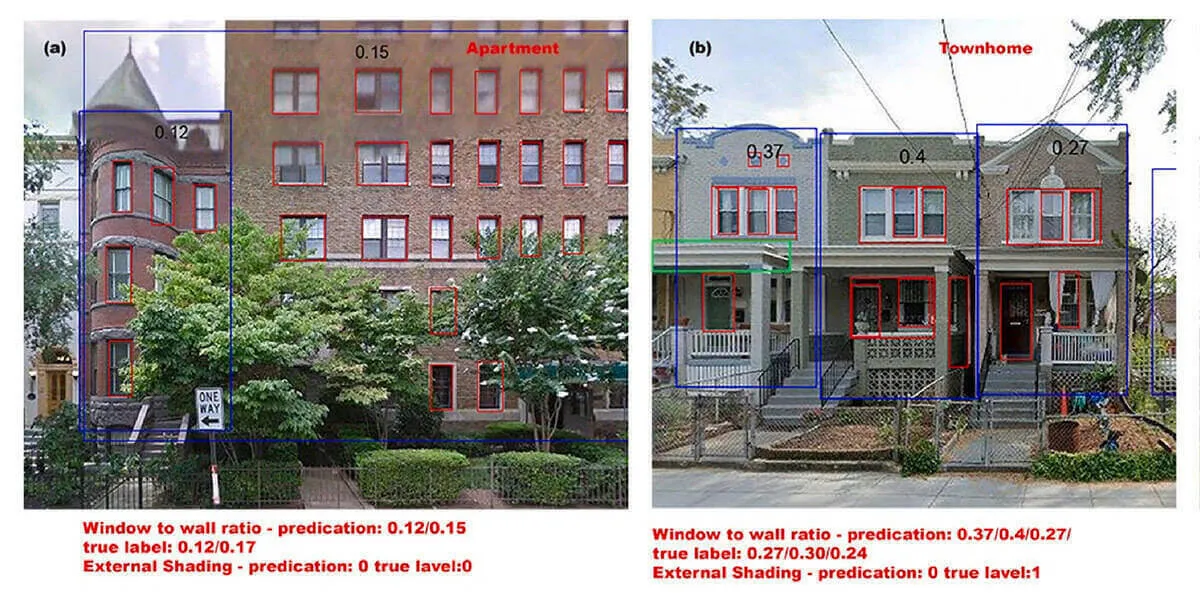- February 28, 2024
- By Maryland Today Staff
Using Google Street View images and an artificial intelligence system, a research team including a University of Maryland public health scholar were able to predict household energy costs for a broad swath of Chicago’s population.
The method can be used nationwide to assess the use of passive design elements like natural ventilation to reduce energy consumption, said Quynh Nguyen, an associate professor of biostatistics and epidemiology and a coauthor of the study published this month in the journal Building and Environment.
“The goal is to survey what buildings look like on a massive scale, so we can find disparities in building design that hurt efficiency, particularly for low-income households,” she said.
The 46 million low-income households across the country bear an energy burden three times that of the national average, according to the U.S. Department of Energy, meaning they pay more than 6% of their gross income for basic energy expenses such as electricity and gas for cooling and heating their homes.
By harnessing ambient energy sources like sunlight and wind, residents can create a more comfortable environment at little or no cost. However, data on passive design is scarce, making it difficult to assess the savings on a large scale.

To address that need, the interdisciplinary team created a method that uses computer vision and machine learning AI (which allows users to “train” a computer model rather than manually program it) to analyze a household’s passive design characteristics and predict its energy expenses with 74% accuracy.
By combining their findings with demographic data including poverty levels, the researchers created a comprehensive model for predicting energy burden across 1,402 census tracts and nearly 300,000 households in the Chicago metropolitan area.
The results yield invaluable insights for policymakers and urban planners, said Ming Hu, associate dean for research, scholarship and creative work in Notre Dame’s School of Architecture, allowing them to identify neighborhoods that are most vulnerable—and paving the way toward smart and sustainable cities. Hu, a former professor of architecture at UMD, began the research utilizing Street View with Nguyen while in College Park.
“When families cannot afford air conditioning or heat, it can lead to dire health risks,” Hu said. “And these risks are only exacerbated by climate change, which is expected to increase both the frequency and intensity of extreme temperature events. There is an urgent and real need to find low-cost, low-tech solutions.”
Their research focused on three of the most influential factors in passive design: the size of windows in the dwelling, whether windows can be opened and the percentage of the building that has proper shading, for example, from awnings.
Nguyen’s students manually annotated some 1,200 Street View images to train a computer vision system to automatically analyze millions of pictures of buildings that the team will eventually be utilizing when the research expands beyond Chicago.
The study team used a convolutional neural network—which mimics characteristics of human thinking—to analyze Street View images of residential buildings to detect passive design characteristics. Their results show that passive design characteristics are associated with average energy burden and are essential for prediction models.
“The first step toward mitigating the energy burden for low-income families is to get a better understanding of the issue and to be able to measure and predict it,” said coauthor Ghorbany, Ghorbany, a doctoral student in Notre Dame’s Department of Civil and Environmental Engineering and Earth Science. “So we asked, ‘What if we could use everyday tools and technologies like Google Street View, combined with the power of machine learning, to gather this information?’ We hope it will be a positive step toward energy justice in the United States.”
The researchers are also working toward including additional passive design characteristics in the analysis, such as insulation, cool roofs and green roofs. Eventually, they hope to scale the project up to evaluate and address energy burden disparities at the national level.
The team also included Xiaohe Yue of UMD; Chaoli Wang, Siyuan Yao and Matthew Sisk of the University of Notre Dame and Mitra Alirezaei and Tolga Tasdizen of the University of Utah.
This article was based on a release by Notre Dame University.
Topics
ResearchUnits
School of Public Health